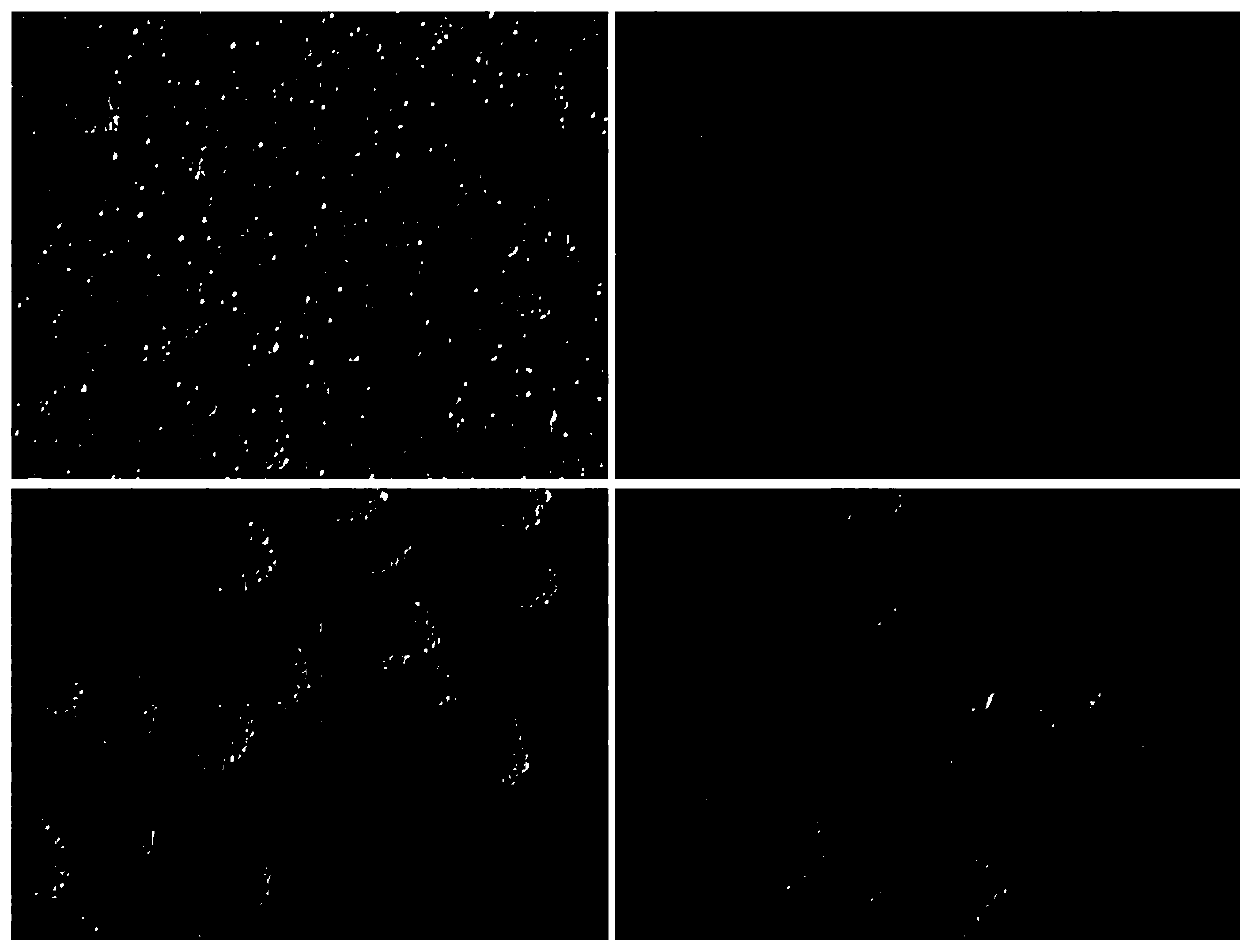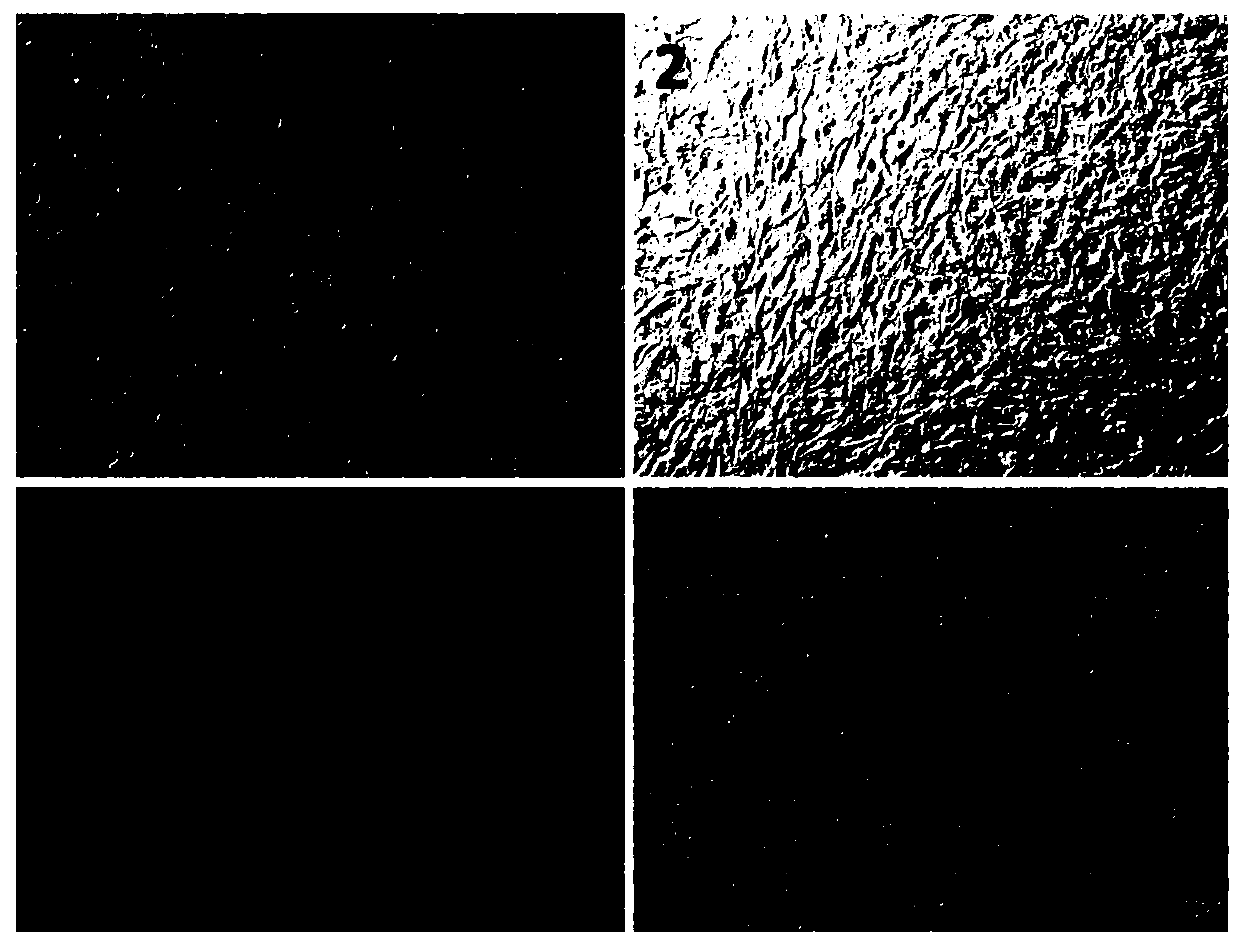A technical method for skin stem cells to differentiate into sperm through ectopic development
A technology of skin stem cells and sperm, which is applied in the field of biomedical stem cells and tissue engineering, can solve the problems that have not been widely used, and achieve the effects of reducing the difficulty of cultivation, complete nutrition, and less damage to the body
- Summary
- Abstract
- Description
- Claims
- Application Information
AI Technical Summary
Problems solved by technology
Method used
Image
Examples
Embodiment 1
[0025] A method for differentiation of skin stem cells into sperm through in vivo development, comprising two steps of inducing skin stem cells to differentiate into primordial germ cells, and implanting the primordial germ cells into the testes of recipient mice to obtain sperm cells, wherein:
[0026] 1) Inducing the differentiation of skin stem cells into primordial germ cells:
[0027] ①Skin stem cell preparation: Extract and culture the skin stem cells and wild-type mouse fibroblasts of the first generation of green fluorescent transgenic mice respectively, and treat the wild-type mouse fibroblasts with mitomycin C, and then the skin stem cells Mix with the treated fibroblasts according to the mass ratio of 1:1 before use;
[0028] ② Select DMEM high-glucose medium as the primordial germ cell induction medium, and add 8% fetal bovine serum to the medium based on the total mass of DMEM high-glucose in the medium, 40 mIU / ml follicle-stimulating hormone, 80 IU / ml leukemia i...
Embodiment 2
[0034] A method for skin stem cells to differentiate into sperm through in vivo development, comprising three steps of inducing differentiation of skin stem cells into primordial germ cells, cultivating the primordial germ cells, and implanting the primordial germ cells into the testes of recipient mice to obtain sperm cells, wherein:
[0035] 1) Inducing the differentiation of skin stem cells into primordial germ cells:
[0036] ①Skin stem cell preparation: Extract and culture the skin stem cells and wild-type mouse fibroblasts of the 2nd generation green fluorescence transfer gene mice respectively, and treat the wild-type mouse fibroblasts with mitomycin C, and then the skin stem cells Mix with the treated fibroblasts according to the mass ratio of 1:1 before use;
[0037] ②Select DMEM high-glucose medium as the primordial germ cell induction medium, and add 12% fetal bovine serum to the medium based on the total mass of DMEM high-glucose in the medium, 60 mIU / ml follicle-st...
Embodiment 3
[0045] Identical substantially with embodiment 2, its difference is:
[0046] 2) Primordial germ cells are specially cultivated, specifically:
[0047] The primordial germ cells obtained in step ③ in 1) were cultured in a special-purpose medium, specifically: DMEM high-glucose medium was used as the basis, and DMEM high-sugar total in the medium was added to it. Fetal bovine serum with a mass fraction of 12% by mass, 25 ng / ml bone morphogenetic factor based on the total volume of DMEM high glucose in the medium, 0.25 mmol / L sodium pyruvate, 0.12 mmol / L non-essential amino acids, 2.5mmol / L L-glutamine, 0.12 mmol / L β-mercaptoethanol, 25ng / ml epidermal growth factor, 50 ng / ml basic fibroblast growth factor, 50ng / ml stem cell growth factor; culture time 5 days, temperature 38°C, Humidity 85%; CO in the environment 2 The concentration is 6%; Primordial germ cells that are more purified, more in number and better in shape can be obtained after a certain period of dedicated culture...
PUM
| Property | Measurement | Unit |
|---|---|---|
| length | aaaaa | aaaaa |
Abstract
Description
Claims
Application Information
 Login to View More
Login to View More - R&D
- Intellectual Property
- Life Sciences
- Materials
- Tech Scout
- Unparalleled Data Quality
- Higher Quality Content
- 60% Fewer Hallucinations
Browse by: Latest US Patents, China's latest patents, Technical Efficacy Thesaurus, Application Domain, Technology Topic, Popular Technical Reports.
© 2025 PatSnap. All rights reserved.Legal|Privacy policy|Modern Slavery Act Transparency Statement|Sitemap|About US| Contact US: help@patsnap.com



